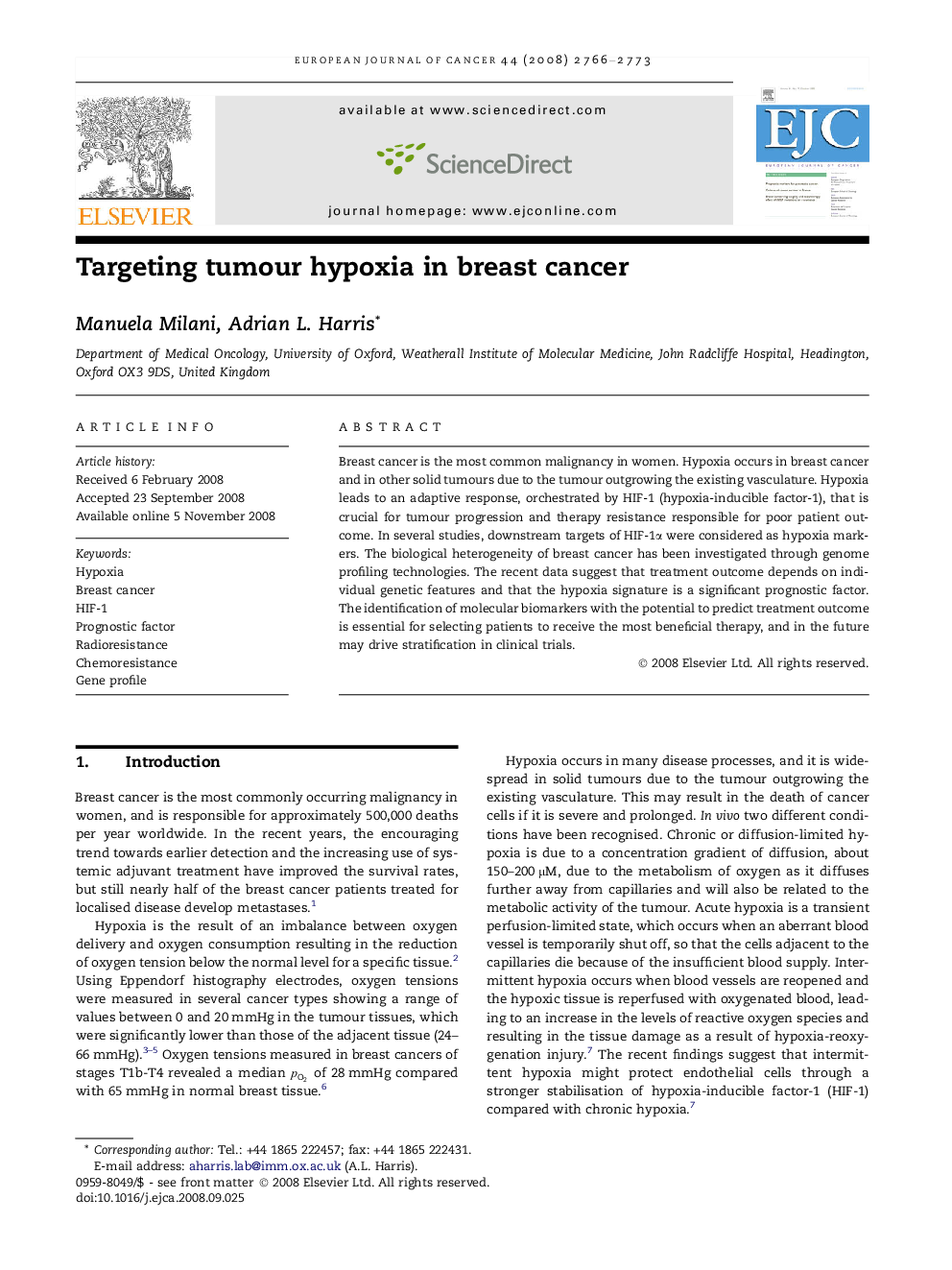| Article ID | Journal | Published Year | Pages | File Type |
|---|---|---|---|---|
| 2123900 | European Journal of Cancer | 2008 | 8 Pages |
Breast cancer is the most common malignancy in women. Hypoxia occurs in breast cancer and in other solid tumours due to the tumour outgrowing the existing vasculature. Hypoxia leads to an adaptive response, orchestrated by HIF-1 (hypoxia-inducible factor-1), that is crucial for tumour progression and therapy resistance responsible for poor patient outcome. In several studies, downstream targets of HIF-1α were considered as hypoxia markers. The biological heterogeneity of breast cancer has been investigated through genome profiling technologies. The recent data suggest that treatment outcome depends on individual genetic features and that the hypoxia signature is a significant prognostic factor. The identification of molecular biomarkers with the potential to predict treatment outcome is essential for selecting patients to receive the most beneficial therapy, and in the future may drive stratification in clinical trials.
